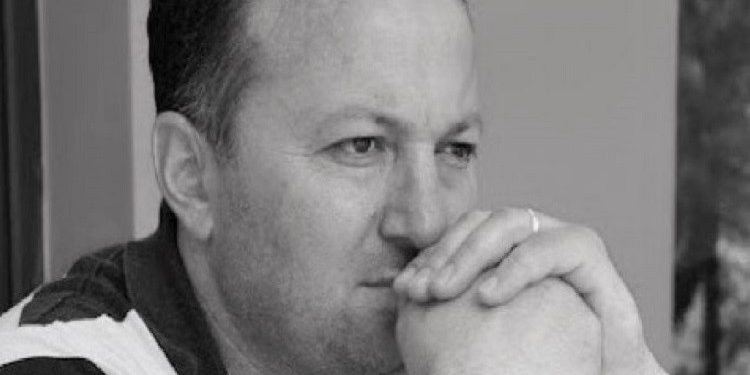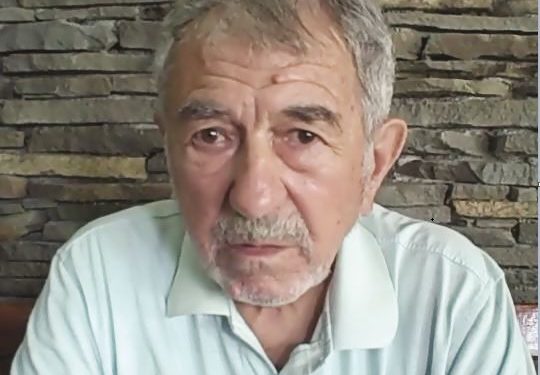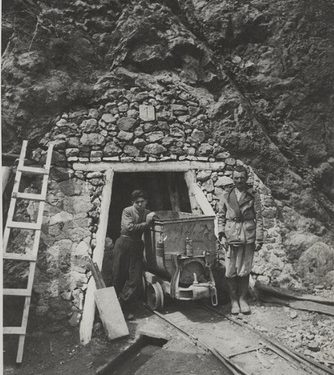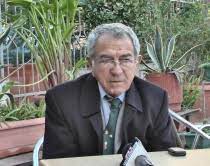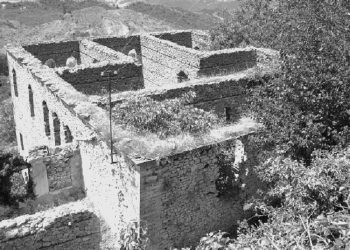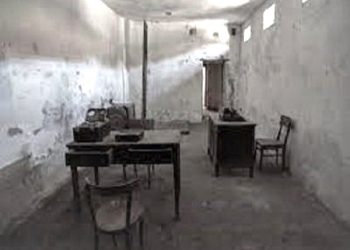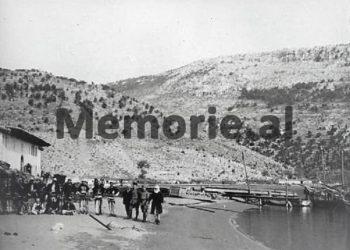By Ferdinand Dervish
Memorie.al / “In the uranium research galleries, people worked who were advised to keep their mouths shut…, once every six months, we reported on the results to Prime Minister Mehmet Shehu, who followed the developments closely…! Some of the colleagues who worked in the gallery were contaminated, therefore fell ill and went to inevitable death…”! The man who shocks with this testimony is called Gëzim Shima and he was neither more nor less, the geological engineer who, during the communist era, directed the “top secret” works in the field, for the discovery of layers containing radioactive material. Even after the 90s, still in the profession, but more sought after abroad, in Italy, Germany and Turkey, Shima is quite fresh in his memories.
Even so fresh, that he can remember with the greatest precision, the exact percentages of uranium in the layers discovered in Kukës and Dibër, he can remember all the data of world science, for the search and use of this rare mineral, he can remember the stories of colleagues who lost their lives, as well as everything valuable discovered by the expedition he led, even “secrets”, or hidden places, where the state or economically powerful individuals can invest to make profits.
Uranium, as the orientation of the Labor Party!
“It’s not that our industry in those years could use uranium, even worse, we didn’t even have the technology to extract the mineral undamaged from the underground, but the state at that time threw us into this adventure, simply for propaganda purposes “, recounts Gëzim Shima, the story that has taken a big “bite” from his life! Speaking in a monotone voice and sometimes preferring to write on a piece of paper, mostly numbers, Shima starts to explain that the history of uranium research had a lot to do with that joke of a song of socialism, which said: We in mouth of the wolf we dance.
“So the uranium search adventure was related to the psychosis that had to be created in the people, that our underground has everything, gold and silver, copper, chrome and finally, even radioactive materials. In an isolated place, this was an evocative, shocking, inspiring and combative request at the same time (laughs). And everything was done with the greatest ingenuity to reach the propaganda goal that we Albanians do not need the help of foreigners, for their products, for everything they own, that we are not dependent on them at all, because we ourselves are very rich, that we have everything here, we produce it ourselves.
Because Albania, even according to Enver, was a ‘golden palm’. More or less for this reason, the state spent millions, keeping for more than 15 years, about 200-250 specialists and workers with high salaries, and opening research galleries that sometimes exceeded hundreds of meters”, explains the essence of one of the craziest enterprises of the Albanian communist leadership, geological engineering. More or less the same, Shima had heard, during periodic contacts with former Prime Minister Mehmet Shehu, the version that arose after the question of why uranium was needed.
“We met Mehmet systematically, once every six months, to report to him. Through the conversations, I caught that he considered uranium also as a reserve, which could be put to work later. So, Prime Minister Shehu was a little more moderate in concept. At that time, we were used to expressions that we have colossal reserves of copper and chrome. But it is clear that this was also part of the propaganda…”, explains engineer Shima.
At the head of the secret expedition…!
Indeed, Gëzim Shima, a resident of Tirana, had started the adventure for uranium research, after an “internment” of 10 years, in the Geological Enterprise of Rubik, where he had arrived appointed, immediately after graduation. It was the year 1971, when he was transferred to the Geophysical Enterprise of Tirana, which served the geological enterprises of the whole country, with the search for various minerals. “Here, in the Geophysical Enterprise of Tirana, ideas were thrown for the first time and work began on the research and evaluation of rare, precious and radioactive minerals”, Shima confesses.
But initially in the mind of the engineer, although appointed in the same company, in the radiometry sector, the data on the research for precious minerals and especially for uranium, would arrive with the value of whispered secrets. “I had heard about an expedition looking for uranium, that it was part of our enterprise, but I knew very well that everything was kept secret and I did not dare to ask about more”, Shima confesses.
Since in this enterprise, the tasks were related to the latest scientific discoveries, Shima sticks to the books. “Through them, I learned that uranium, or rather radioactive materials, were located in areas with complex geological-tectonic construction, with developments of acid magmatism…”, explains Shima, with a bunch of incomprehensible words of the profession. While studying, Shima manages to distinguish between specialists. “The area where uranium was mined, in terms of usable percentage, was very little in Europe.
It was issued only in the Czech Republic, France and Sweden. While in Russia, the USA, South Africa, Congo, Gabon and Australia, the percentages of uranium content in the mineral were much larger. In Gabon and Congo, for example, uranium was found on the surface in the amount of 1 or 2 percent of the ore and there were also explosions in nature, or radioactive disintegration in nature, as we specialists call it,” Shima confesses. Finally, the engineer comes to the logical conclusion, that in Albania it must be difficult to find uranium ore, in high values.But fate brings that in 1972, he himself was appointed to head the team that searched for uranium in the Albanian territory.
The two locations
Looking at the documents available to the expedition that had been operating for at least two years, Shima learns that it was the Russian geologists who had been looking for uranium for a short time in the territory of Albania. “We had the maps left by the Russians, they had defined some areas, but after we verified them, nothing turned up. They had found traces of uranium in the bauxite, but everything was worthless. So it was up to us, the Albanians, to get to work “, Shima confesses. The engineer claims that before he himself was appointed in charge of the expedition, in Kukës, in the area of Shishtavec, in the place called Nimçe, as early as 1970, a vein of minerals containing uranium was found.
According to Shima, everything was the merit of a group of geologists led by Llambi Llango and Vasil Nasi, while geologists Petrit Kodheli and Ismail Balluku were credited for the initial research and discovery. “This source was encountered in the so-called; metamorphosed black shales…”, Shima begins to utter, again a string of incomprehensible terms. As for the discovery of the second source, that of Muhur in the area of Peshkopia, Gezimi says that, without denying the values of his colleagues, he himself had also contributed. “My merit was that I believed that apart from the possibility of finding uranium in the black shales, there was another possibility, that they could be found in sandstones similar to those of the “verrucano” series, a source found in Italy”, explains the engineer of uranium.
So the resourceful engineer quickly went to success, helped abundantly by the foreign literature he read, which talked about uranium research in the neighboring countries, Italy and Greece. “These countries, together with Albania, are part of what is called the ‘alpine geosynclinal system’ and it was very possible that the radioactive material was hidden in the same formations that were found in Italy and Greece. In these neighboring countries, objects of the elements were found radioactive in fragmentary, sandy and conglomerate deposits. This was the essence of my thoughts after browsing for a long time, foreign literature”, Shima confesses, recalling that the first anomalies in the second site, discovered in Muhur of Dibra, are found by geophysical technicians; Sulejman Dama, Sabri Luli and Gëzim Kalldani.
Yes, according to Shima, geophysical engineers had given a great help in research-surveys and research-discoveries; Safet Dogjani, Osman Lika, Pëllumb Kasapi, and others. However, the Kukës site, or the Nimçe gallery, had a higher content of uranium. “If in Muhur of Dibra, ore was found that had up to 0.05 percent uranium in its percentage, in Nimçe of Kukës, this amount was in the highest case, up to 0.5 percent. But if we make a comparison, currently, in Sweden, uranium in similar values is used, as the technology is very modern”, engineer Shima makes a logical parallel.
Meanwhile, the time had come for the first face-to-face meeting with the Prime Minister of the country, Mehmet Shehu. “I remember that they told us the day before, that Mehmet Shehu himself was waiting for us the next day. Immediately the stress started. We didn’t even know how to dress. I kept at home a coat of my father’s, made abroad, with a high quality fur. It was the best one we had in the family. I wore it. But the director of the company, who was informed about the meeting like me, was very well dressed. I wore a mustache in those days and I remember that my curly hair was a bit long. When Mehmeti saw us dressed in crutches, he seemed surprised, because he said to the director: Have you confused theatron (theatre) with the Prime Minister’s Office?
But he didn’t let us be afraid, because he himself laughed at his joke,” the engineer confesses. “Mehmet was serious when it came to work and he listened with respect, especially those who had some dough. This is where I heard for the first time the idea that uranium was needed as a reserve. But I myself was convinced that the search and finding him did not constitute any special interest for the interests of the political caste in power, otherwise they would have killed 20 people before me”, engineer Shima shows his conviction. Finally, despite the percentage of low of the layers found, the order was; to continue the work with increased intensity. “The result was hundreds of meters of research galleries and damaged health, for our colleagues. Because uranium, even in small quantities, killed those who abused it,” the engineer confesses.
The invisible killer
And the history of Albanian uranium research continues. It had to be found in large, usable quantities, in order for the people to be told this, or simply to spread the word secretly, mischievously, because that way it had even more effect. “We were engaged in the search for uranium, until 1986, a year after the death of Enver Hoxha. The mineral was not exploited; rather we buried it in the old galleries. So the idea of its conservation, or preservation, was realized for a second time. So only samples of ore containing uranium came out of the galleries, towards the laboratories. But in 1983, the order came to close the Muhur gallery and in 1986, the Nimçe gallery was also closed.
Of course, the galleries were closed, or sealed according to the rules, by introducing large quantities of inerts into their mouths, but this sealing did not successfully close all the problems. After later, we learned that some of our friends lost their lives from contact with uranium”, engineer Shima confesses. According to him, the project was stopped in these years, since the poor state had no more funds. Because the salaries of this staff, who worked in a very secretive manner, were high. “I remember that my salary was or exceeded the salary of a minister, but even simple workers or miners received around ten thousand old ALL, at that time,” he confesses engineering.
After leaving these areas, the consequences would come to the ears of the people who worked in these galleries, with the thunder of fear. “The radiation on the surface was not high, so it ranged from 18 to 26 gammas, while exposure to 40-50 gamma values is considered extremely harmful to health. So the damage appeared in those workers and engineers who worked inside the gallery in some of them, over the years, incurable diseases appeared, which took their lives,” says Shima. According to him, the whole mistake was consumed at the beginning of the works, since no hygienic-sanitary measures were taken, and there was no treatment of those working in the gallery. So, initially the workers and engineers had worked without masks and other protective equipment, while they had not even received special food treatment. But then, according to Shima, some things had changed.
“I remember when we were there; the excavation debris did not show any damage even though it was exposed outside, in the environment. Then we heard about dead animals and births with deformities. But as long as we worked there, we did not notice environmental contamination , as in both rivers, fish continued to grow, while in Muhur of Dibra, even we caught trout in the river Set, all the time”, the engineer confesses, insisting that the only victims were the people who worked in the gallery . “As far as I know, about 10 percent of all the workers and engineers who worked on this project were treated for occupational diseases and had an inevitable death. Eh, they all died young,” he concludes with a deep sigh. , the uranium engineer.
Chinese engineers
In the years 1970-1974, a team of Chinese engineers and specialists was added to the uranium research expedition. “We used to communicate in Russian, with the Chinese. They brought some equipment that we later realized were copies of Russian equipment, but only a small part of their group, about 10 people, seemed to us to have experience. I remember that they dealt with the gallery of Nimçe, but I did not see that they were in any case, at the height of the Albanian engineers”, recounts Gëzim Shima.
The two locations
There were two galleries that were excavated only for the purpose of searching for uranium ore, in the years 1970-1986. According to the testimony of engineer Gëzim Shima, one of the galleries collapsed at the foot of the Topojan river, in the area of Shishtavec in Kukës, while the other gallery was in Muhur i Dibra, on the banks of the Sette river. In both galleries, a layer of uranium-bearing ore was found, with a thickness of several millimeters to the first tens of meters. During the time they were working, the areas around the galleries as well as the river water did not turn out to be polluted in any case.
Gamma rate
On the surface of the earth, near the uranium research galleries, there was a radiation of 18 to 26 gammas, which is considered harmless. Meanwhile, radiation at the 40-50 gamma level is considered dangerous.
Sweden
Currently, in Sweden, uranium ore is mined and then processed, with the same percentage values as the one that was discovered in Albania. But in Sweden, the difference is the sophisticated technology used.
In Africa
In two African countries, in Gabon and Congo, the amount of uranium present in the mineral reaches values of 1 or 2 percent. In these countries, natural explosions of uranium, or as it is called in the language of science, have also been observed; radioactive decay in nature.
Percent
The percentage of uranium content in the discovered layers ranged from 0.05 percent in Muhur in Dibra and up to 0.5 percent in Shishtavec in Kukës. Uranium in ore at a value of 0.05 percent and above is considered industrial, that is, processable. Memorie.al





